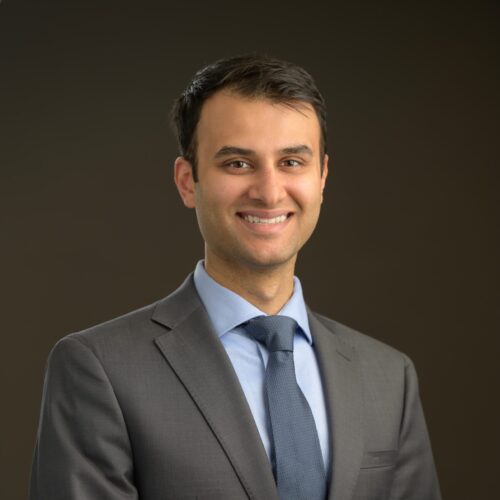Glaucoma

For decades, our dedicated eye doctors at North Park Ophthalmology have provided complete glaucoma care. We pride ourselves on ample one-on-one time with patients to deliver customized care using the most advanced medical technology and treatments to best preserve vision.
What is Glaucoma?
Glaucoma is a disease that occurs when fluid buildup increases pressure in the eye and damages the optic nerve. There are multiple types of glaucoma, however, two of the more common types are open-angle and acute-angle closure glaucoma.
What are the Symptoms of Glaucoma?
The symptoms of glaucoma will vary depending on which type you have and how advanced the condition has become.
The symptoms of open-angle glaucoma are:
The symptoms of acute-angle closure glaucoma are:
Who is Most Affected by Glaucoma?
The following groups are at an increased risk for developing glaucoma:
What Treatment Options Are Available for Glaucoma?
There are several effective treatment options available for managing glaucoma and lowering eye pressure to prevent vision loss. Each approach works in different ways to lower eye pressure. However, the key is finding the right treatment or combination of treatments tailored to the type and severity of glaucoma.
Glaucoma Eye Drops
Glaucoma eye drops are often the first line of treatment for glaucoma. These medicated drops work to reduce eye pressure by decreasing the amount of aqueous humor fluid produced in the eye or improving its drainage. These medications are typically prescribed as soon as glaucoma is diagnosed and must be used daily to control eye pressure.
YAG Laser Peripheral Iridotomy (LPI)
A YAG laser peripheral iridotomy (LPI) is a quick, non-invasive laser procedure used to treat angle closure glaucoma. During LPI, your North Park Ophthalmology eye doctor will use a special YAG laser to create a tiny hole in the iris to improve fluid flow between the front and back of the eye. This helps eye pressure levels and helps prevent acute angle closure attacks in those with narrow angles. The procedure takes just minutes and is not painful.
Selective Laser Trabeculoplasty (SLT)
Selective laser trabeculoplasty (SLT) is a laser treatment for open-angle glaucoma. This outpatient procedure involves carefully targeting a part of the trabecular meshwork, which is the drainage channels of the eye, to stimulate drainage pathways and reduce eye pressure. SLT provides similar pressure reduction as medication and may delay the need for surgery.
Minimally Invasive Glaucoma Treatment (MIGS)
For many patients living with glaucoma, managing the “silent thief of sight” has traditionally meant a lifetime of eye drops or the prospect of major surgery. However, advancements in ophthalmology are offering new options.
Minimally invasive glaucoma surgery (MIGS) has revolutionized glaucoma management, offering patients with mild to moderate glaucoma an alternative to traditional surgical approaches.
What Makes MIGS Different?
MIGS procedures are a group of surgical interventions that have a high safety profile, offer minimal disruption to the eye, are easy to use for patients and physicians, and offer rapid recovery with minimal additional downtime. Unlike traditional glaucoma surgeries such as trabeculectomy or tube shunt procedures, MIGS offers a different approach to reducing eye pressure.
The key differentiator lies in how these procedures work. This targeted approach allows surgeons to address the specific areas where fluid drainage becomes compromised in glaucoma patients.
These devices help lower intraocular pressure in glaucoma patients, enhancing treatment outcomes while offering faster recovery times compared to traditional procedures. For many patients, this translates to meaningful reductions in their dependence on daily glaucoma medications.
Advanced MIGS Procedures: OMNI Technology
One of the most advanced MIGS options is the OMNI Surgical System. This system combines two procedures, canaloplasty and goniotomy, to improve the eye’s natural drainage system and help lower eye pressure.
OMNI works by addressing the main areas where fluid tends to build up in the eye. With OMNI, many patients are able to reduce or stop using their eye drops, and the effects of the procedure have been shown to last over time.
During canaloplasty, a small instrument is used to gently clear and expand the eye’s natural drainage channels using a special gel. Goniotomy involves making a small opening in another part of the eye’s drainage system to help fluid flow more easily.
Who Benefits from MIGS?
Patients are generally good candidates for MIGS if they have mild to moderate glaucoma, are intolerant or noncompliant with drops, or if their IOP is not controlled with eye drops or laser trabeculoplasty. This represents a significant number of glaucoma patients who previously had limited treatment options between medications and major surgery.
The ideal MIGS candidate often presents with specific characteristics. Patients experiencing difficulty with medication compliance due to complex drop regimens, those suffering from side effects, or individuals whose pressure remains elevated despite other treatments may find MIGS particularly beneficial.
MIGS procedures also offer unique advantages for patients undergoing cataract surgery. MIGS implant can be implanted during cataract surgery, reducing dependence on topical medications. This combination approach maximizes the benefit of a single surgical intervention.
What Happens During MIGS Treatment?
The MIGS procedure experience is very different than traditional glaucoma surgery. Most procedures are performed in an outpatient setting using local anesthesia, allowing patients to remain comfortable throughout the brief procedure.
The minimally invasive nature means smaller incisions, reduced tissue trauma, and faster healing times. After the procedure, your eye doctor may prescribe you a short course of anti-inflammatory eye drops.
You will also need to see your eye doctor for regular follow-up appointments to monitor healing and make sure your eye pressure is reduced. Many patients notice improvements in their daily routine almost immediately, as the burden of frequent eye drop administration is significantly reduced or eliminated.
Exploring Your Treatment Options
MIGS has transformed glaucoma treatment, offering patients with mild to moderate glaucoma an effective bridge between medical therapy and traditional surgery. For patients struggling with glaucoma management through eye drops alone, or those seeking to reduce their medication burden while maintaining excellent pressure control, MIGS is a great treatment option worth consideration.
At North Park Ophthalmology, our experienced team is committed to providing personalized care using the latest surgical options available. If you’re interested in learning whether MIGS is right for you, we’re here to guide you through your choices and help you take the next step toward protecting your vision and improving your quality of life.
Schedule an appointment at North Park Ophthalmology in Pittsburgh, PA, today!
Compassionate, Patient-Focused Doctors
Expert-Level Glaucoma Treatment
Here at North Park Ophthalmology, we have decades of clinical experience in the diagnosis and treatment of all types of glaucoma. We pride ourselves on using only the latest technological advancements to provide patients with the best possible clinical outcomes. Our eye doctors develop personalized treatment plans for every patient, to ensure that the treatment addresses their symptoms and unique lifestyle needs. If you are looking for a Pittsburgh ophthalmologist who is caring, compassionate and focused on you, look no further than North Park Ophthalmology. Put your ‘best glaucoma specialist near me’ searches to rest and schedule an appointment with us today!






